Education is the best economic policy there is
Tony Blair
If you want to get a better handle on and knowledge of economics — whether for school, work, or just out of curiosity — knowing the most common economic terms is a great place to start. Understanding these concepts will make it easier to follow financial news, join in on discussions, and see how economics plays a role in everyday life.
Here are some of the most important economic concepts to know that we will elaborate on in this article:
Understanding key concepts like supply and demand, econometrics, and monetary policy will give you a clearer grasp of micro vs macroeconomics and make it easier to follow economic discussions.
Recognizing the difference between micro and macroeconomics will help you understand how individual financial choices shape markets and how broader policies impact entire economies.
Understanding the opportunity cost of capital will make it easier to weigh financial decisions, whether for business investments or personal long-term planning.
Developing a strong foundation in economic principles will help you analyze data, track market trends, and engage in discussions with confidence.
Learning and applying economic concepts will strengthen your analytical thinking and give you a better understanding of how financial systems work.

What is economics and why is it so important?
Economics studies how people, businesses, and governments make choices about resources, money, and trade. It helps explain everything from why prices rise and fall to how governments create macroeconomic policies to manage inflation, employment, and economic growth.
The impact of economic research is so significant that outstanding contributions to the field are recognized with the Nobel Prize in Economics, which has been awarded to influential economists since 1968. Many winners have shaped modern economic thought, influencing everything from fiscal policy to global trade regulations.
At its core, economics is about decision-making and the opportunity cost of capital — weighing one choice against another to determine which offers the best return or cost value. This applies to everything from individuals deciding how to spend their money to companies setting prices based on supply and demand.
Markets also play a crucial role in economics, whether it’s the stock market moving between bearish vs bullish trends or industries operating within different market structures, such as monopolies and oligopolies.
By understanding these economic terms, you can better analyze financial news, make smarter business decisions, and see how policies impact the economy. Economics isn’t just theory—it’s a tool that helps shape the world around us.
What are the key economic terms?
Below are 25 introductory terms that are commonly used in the field of economics, and which may well be used during your studies in economics. Even if the below terms are not taught as an aspect of your curriculum, often these terms will be referenced in your wider economics reading. For example, these terms are often mentioned in blog posts, economics news articles, or even during economics podcasts.
1. Bearish vs bullish markets
The stock market moves in cycles, and you’ll often hear the terms bear market and bull market to describe its direction.
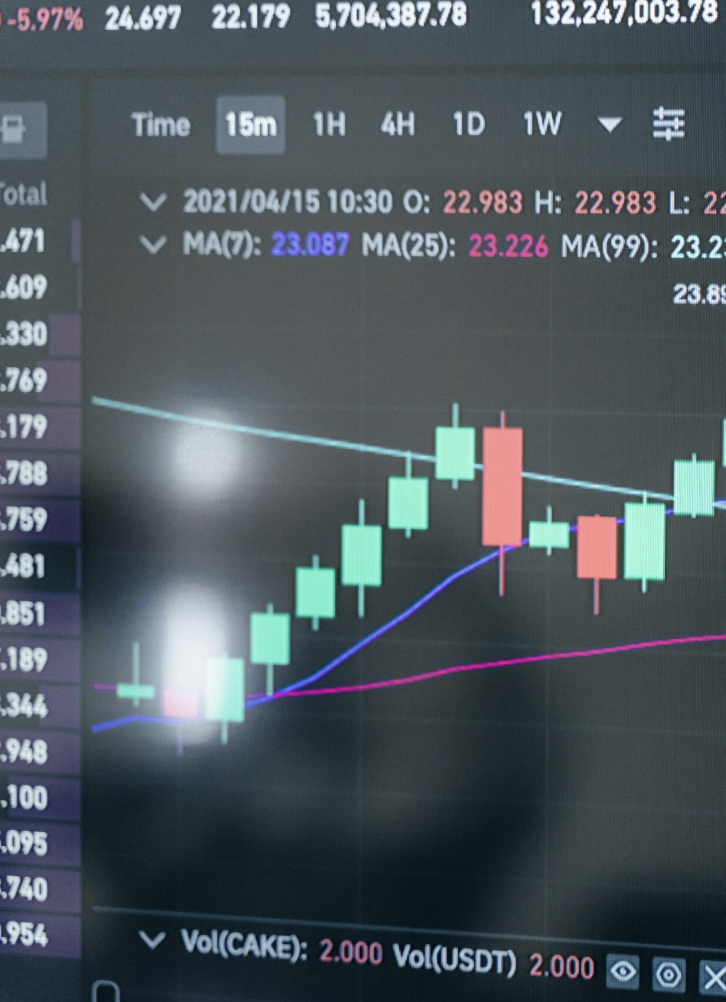
A bear market happens when stock prices are falling, and there’s a general sense of pessimism among investors. This often leads to more selling, as people try to cut their losses, which can push prices down even further. On the other hand, a bull market is the opposite — stock prices are rising, and confidence is high. Investors are more willing to buy, expecting prices to continue climbing.
In short, bearish means prices are going down, and bullish means prices are going up — both affecting how people trade and invest.
2. Business cycle
The business cycle refers to the overall expansion and subsequent contraction of an economy over a period of time. As a result, the business cycle is part of the wider field of macroeconomic theory. You can find a definition of macroeconomics below.
3. Comparative advantage
A term attributed to economist David Ricardo. Comparative advantage is a theoretical concept that describes the ability of one party to produce goods and/or services with a lower opportunity cost compared to another party or parties. See below for a definition of opportunity cost.
4. Division of labour
The division of labour describes the process of breaking down tasks so that separate groups or individuals can carry out each task. It is often associated with the production process and overall productivity.
5. Elasticity of demand
The elasticity of demand describes how demand for goods or services increases or decreases when the price of that good or service changes. Goods that generally are susceptible to the elasticity of demand should exhibit the following patterns:
- An increase in the cost of the good will lead to a decrease in demand; whereas
- A decrease in the cost of the good will lead to an increase in demand.
6. Financial markets
Financial markets facilitate the exchange of what we call financial instruments, this includes things such like stocks, bonds, cryptocurrency, different commodities and derivatives, ultimately allowing for all types of entity to raise capital, manage their own risk and invest. These markets can be put into different categories:
- Capital markets
- Money markets
- Foreign exchange markets
Each market serves a specific function within the bigger global economy. A well-functioning financial market promotes economic stability and in turn growth, by pushing liquidity and maintaining transparency in pricing.
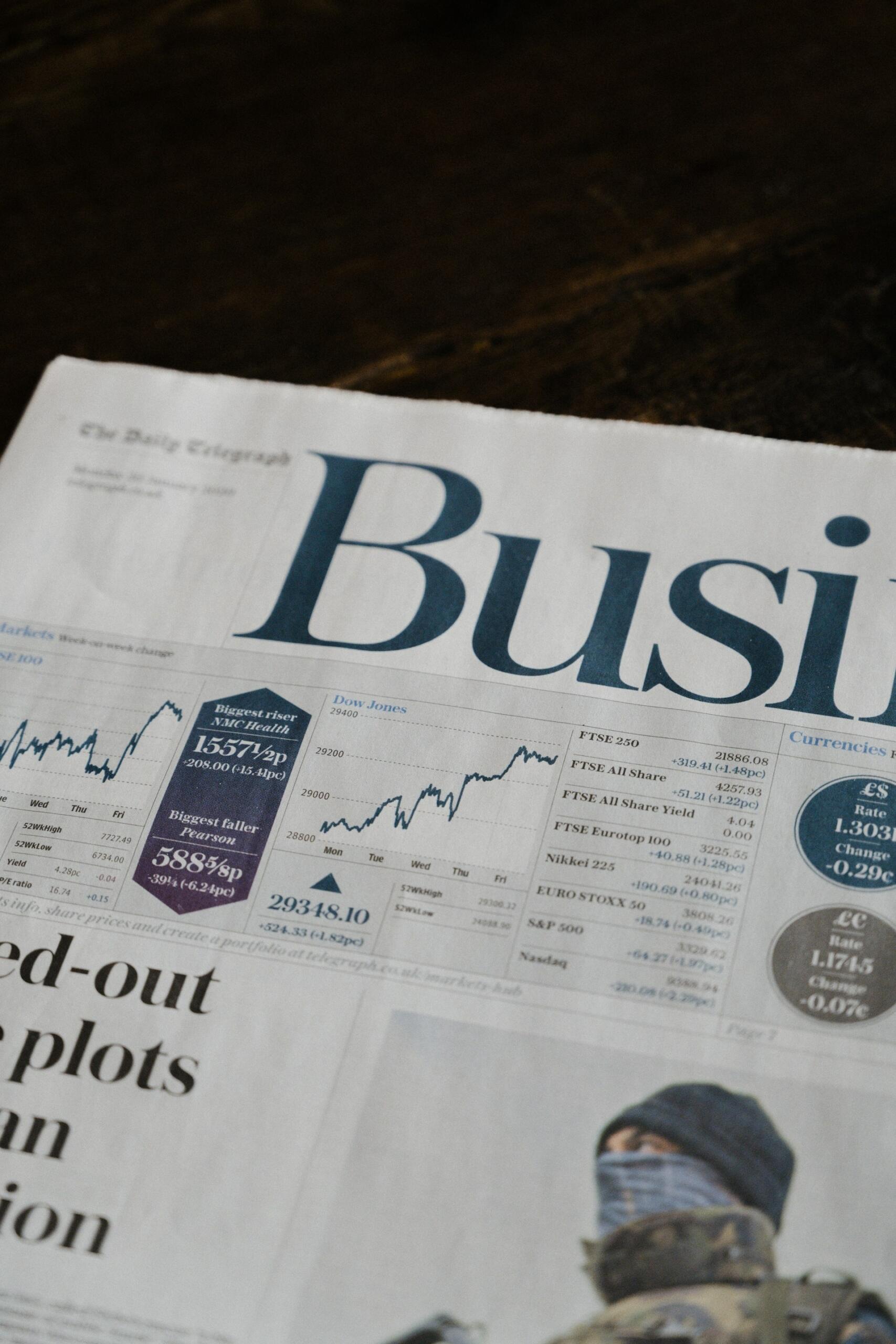
7. Liquidity
Liquidity refers to how easily an asset can be converted into cash without affecting its price. Cash is highly liquid, while assets like real estate take longer to sell. High liquidity allows for quick trades, while low liquidity can cause price fluctuations.
8. Fiscal policy
Fiscal policy is a term used to talk about a government’s spending and how said spending then affects the global or local economy, most typically if spending patterns change aggressively. Such policy might involve decisions on taxation, public expenditures, borrowing. Governments commonly utilize fiscal policy to boost the economy during downturns by accelerating their spending or modifying tax rates. How effective a country's fiscal policy is relies on things such as the current economic state, levels of public debt and the speed at which policies can be implemented before changes are actually seen.
9. Gross domestic product (GDP)
GDP quantifies the monetary value of final goods and services (specifically those that arrive to the final user) produced in a nation within in a certain timeframe, be that a quarter, year or specialized period. The GDP adds up all of the output generated within the borders of country the country in question.
10. Growth rate

Growth rate is a measure of growth and how it increases over a period of time. It can be used to describe economic growth, gross domestic product, or items such as annualized growth rates for a company. This metric is essential for assessing the health and performance of an economy, industry, or business, providing insights into patterns, trends and how to proceed! Growth rates can be calculated on a monthly, quarterly, or annual basis, and they are often expressed as a percentage to facilitate simplicity of comparison across different time periods and/or sectors.
11. Interest rates
An interest rate is calculated by applying a percentage to the principal's borrowed amount. A common example of a principal is a loan or some other form of debt. The amount of interest charged is usually calculated by reference to an annual rate.
Here is where you can find reputable economics tutors.
12. Inflation
In its simplest terms, when there is inflation there is a rise in the prices charged for goods and services. Where an economy has inflation, the cost of living tends to rise.
If you want to see how inflation impacts your day to day life, The Bank of Canada provide this neat calculator that uses monthly consumer price index (CPI) data from the year 1914 up until the present day to identify cost fluctuations of a fixed selection of consumer/your purchases.
An increase in this cost is called inflation, whilst a decrease is called deflation...
13. Deflation
Deflation is the opposite of inflation. It occurs when demand reduces, and this, in turn, produces results such as reduced prices.
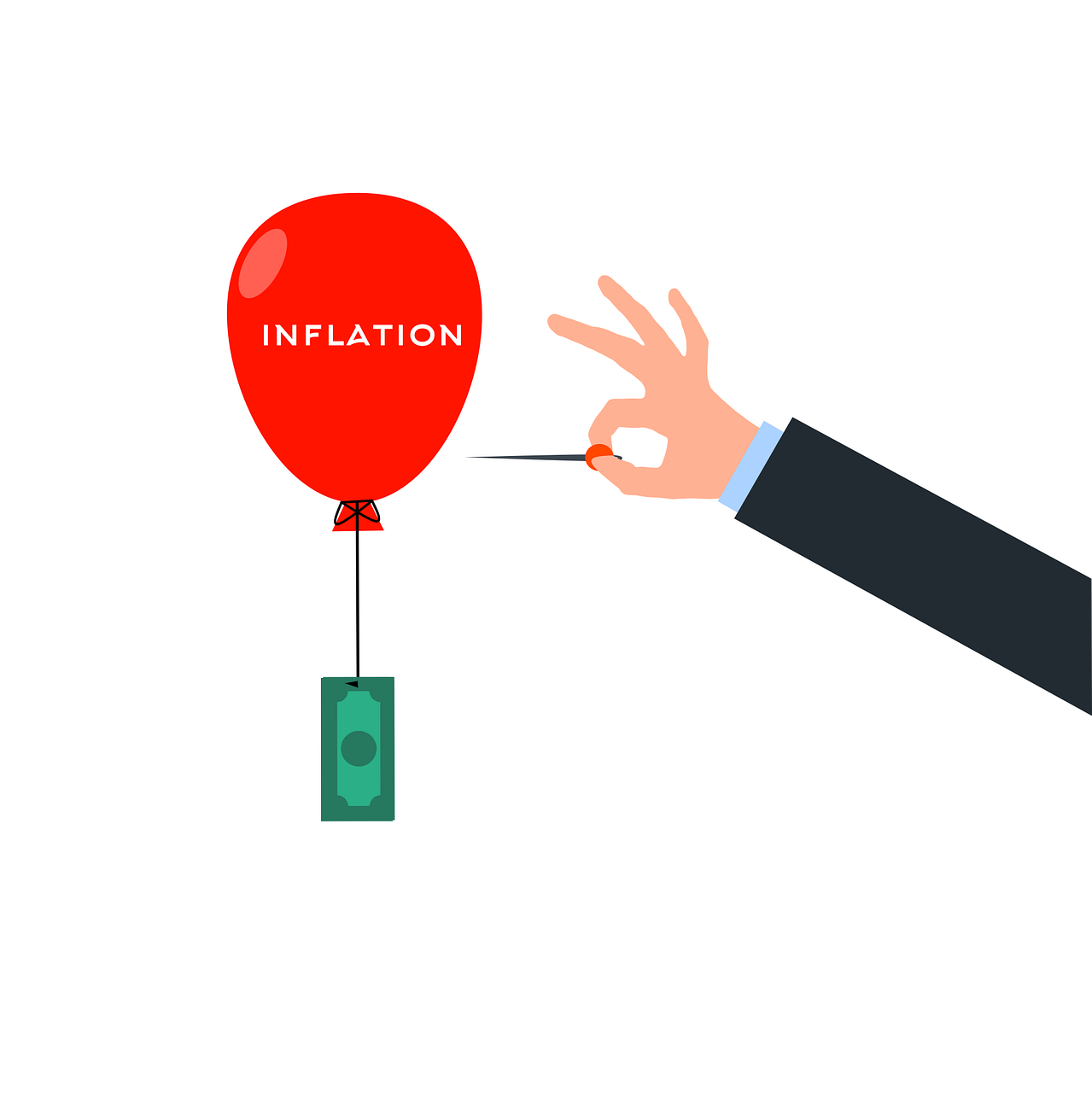
14. Stagflation
Stagflation describes an economy that is experiencing slow economic growth, whilst also experiencing inflation and high levels of unemployment. Stagflation is far less common than inflation or deflation.
15. Keynesian economics
Developed by the economist John Maynard Keynes, Keynesian economics describes Keynes' economic theories and beliefs, which contained the conviction that government involvement in the economy through spending and taxes could help increase demand and move an economy out of a depression.
16. Law of demand
The law of demand examines how customers’ buying habits change when prices increase. Specifically, the theory posits that all other things being equal, when prices of a good increase, the demand for that good falls.
17. Law of supply
The law of supply states that all other things being equal, an increase in price levels results in an increase in the quantity of those goods that are supplied.
Still not understanding supply and demand? Some of us are visual learners:
18. Macroeconomics
Macroeconomics studies how the economy behaves as a whole, examining broad trends that impact nations and industries. It is often contrasted with micro vs macroeconomics, where macroeconomics looks at large-scale economic factors.
- Inflation and deflation rates
Gross Domestic Product (GDP)
- Unemployment rate
Economic output measures the total production of an economy, unemployment indicates the number of people employed, and inflation or deflation reflect whether prices are rising or falling - policymakers therefore seek to boost GDP, maintain inflation at a healthy level, and of course, reduce unemployment.
19. Microeconomics
The opposite of macroeconomics is microeconomics. Microeconomics focuses on how individuals and companies act within an economy, and how their behavior also influences an economy.
- Efficiency
- Equity
- Growth
Economic growth is typically viewed as a macroeconomic issue, but it is closely linked to individual economic behavior and market dynamics.
20. Marginal utility
Marginal utility refers to the amount of satisfaction a consumer has by consuming a good or service. Marginal utility can be used by economists to gauge how much of a good or service a consumer should buy.
21. Monetarism
Monetarism is a school of thought that centres on the idea that the volume of money in an economy is a key factor in the amount of economic activity and growth. It is a theory that sits in contrast to Keynesian economics.
Find online economics courses here on Superprof.
22. Oligopoly
An oligopoly is a market structure where a few large firms dominate, influencing pricing and competition. Unlike a monopoly with one supplier or a duopoly with two, an oligopoly has multiple suppliers whose actions affect each other. To visualize it better looking at the oligopoly graph below can visually represent how these firms control market prices and competition within an industry.
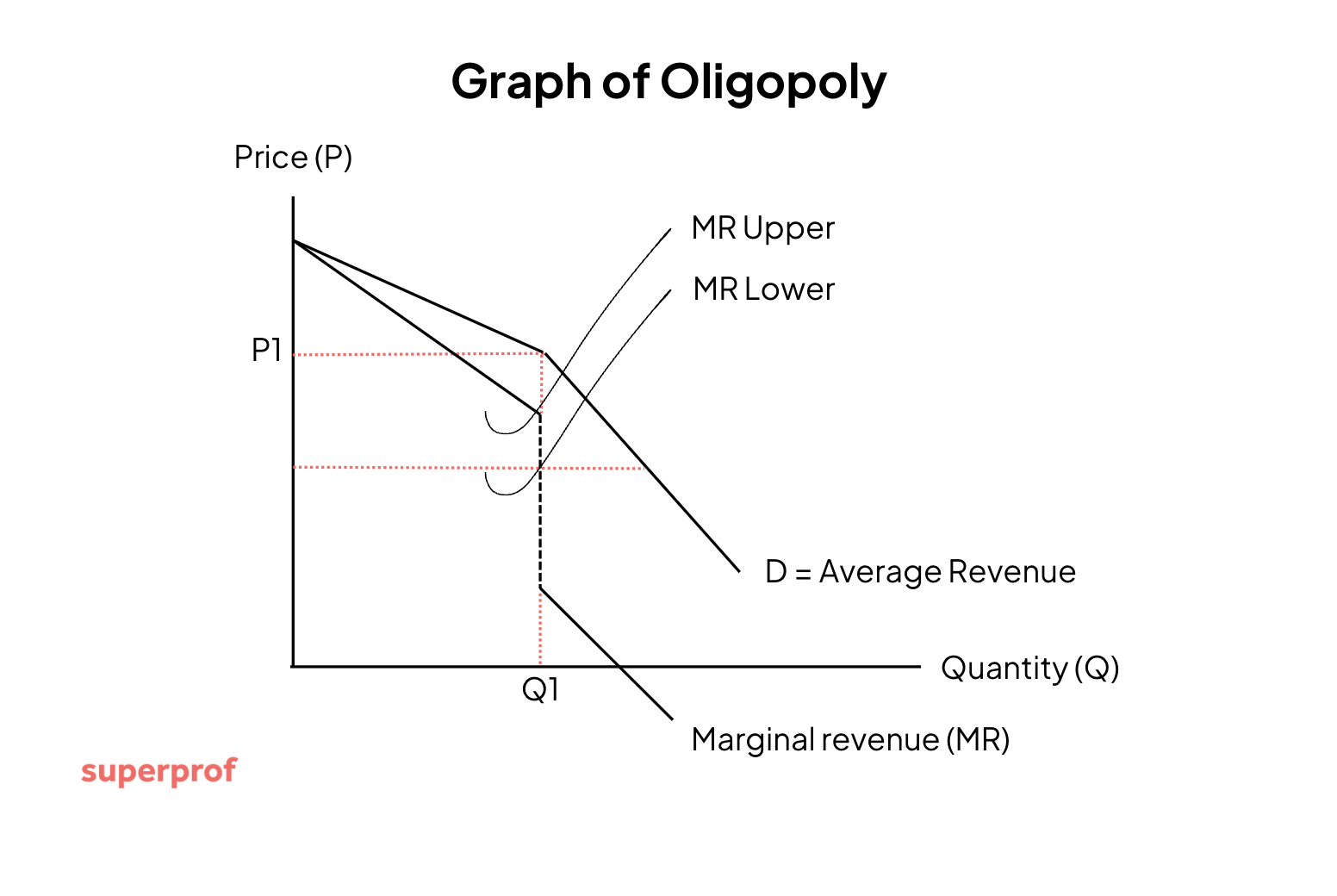
23. Opportunity cost
Opportunity cost is what you give up when choosing one option over another. In investing, this is called the opportunity cost of capital, where an investor skips one investment to put money into another, hoping for a better return.
24. The Invisible Hand
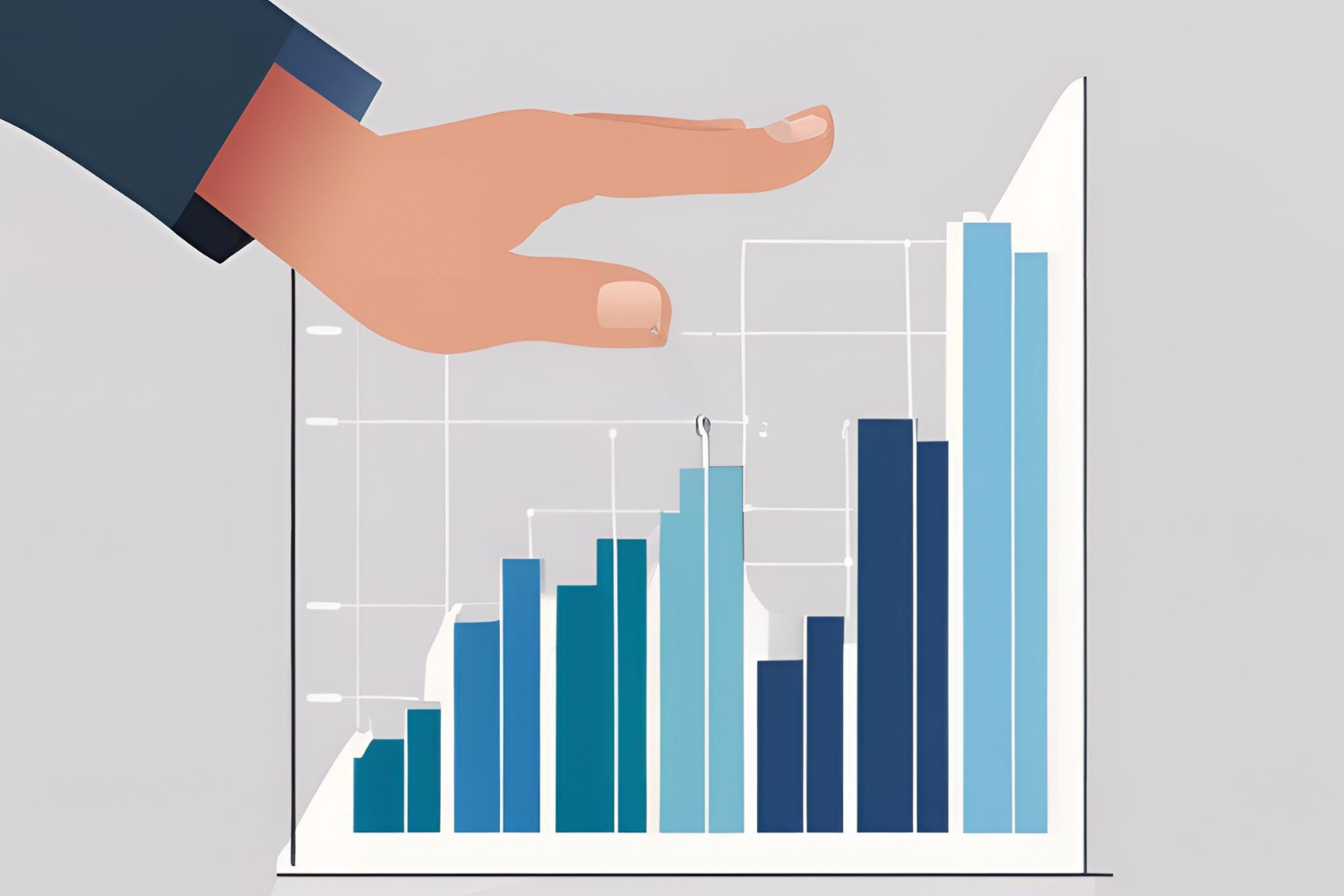
An idea was introduced by the philosopher Adam Smith, the invisible hand describes the benefits that society at large can enjoy as a result of the actions of self-interested individuals. The invisible hand was an argument used to advocate the benefits of a free market.
25. Trade barriers
Trade barriers are government policies that restrict or control international trade. These can make it harder or more expensive for goods to move between countries. Common examples include:
- Tariffs - Taxes on imported goods, making them more expensive.
- Trade quotas - Limits on how much of a product can be imported.
- Embargos - Bans on trade with specific countries.
How can you build a stronger understanding of economics?
The difficulty in understanding economics is that there is so much terminology within the field.
For example, learning one to three new terms each week can help you build a strong understanding well before the academic year ends. By then, you’ll be comfortable with these concepts and have committed them to memory for the long run.
Of course, if you need or would like to learn such terminology quicker and in a more intensive fashion, then you can always hire an economics tutor to help you revise core economic terms and concepts. Aside from helping you learn such terms, an economics teacher or tutor can:
- Give you exercises that consolidate your knowledge of economic terms;
- Provide you with learning techniques to help you during your revision;
- Identify areas or key terms that you're struggling with, whether that's concepts that fall within behavioral economics or terms such as stagflation; and
- Complement your school’s curriculum by working with you on the areas you’re having the most difficulty with.
Platforms like Superprof makes it easy to find experienced tutors who can help you succeed. So, keep going, keep learning, and don’t hesitate to seek out support when needed. The more familiar you get with these terms, the more you will see how economic science shapes the world around you.
















